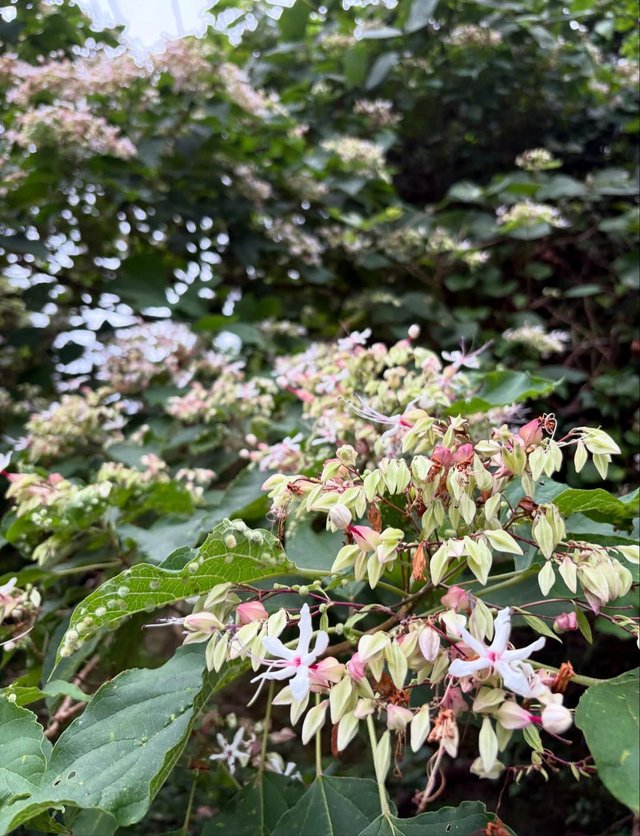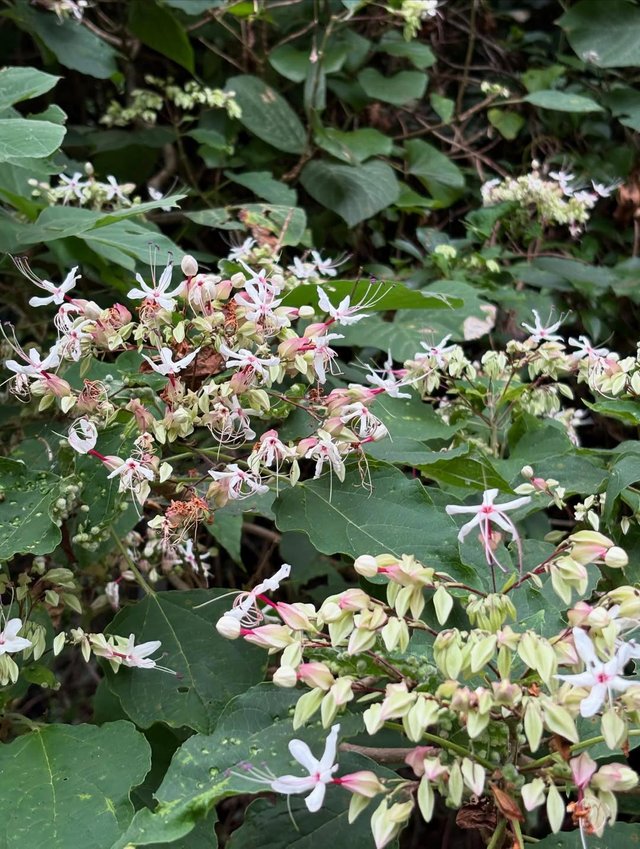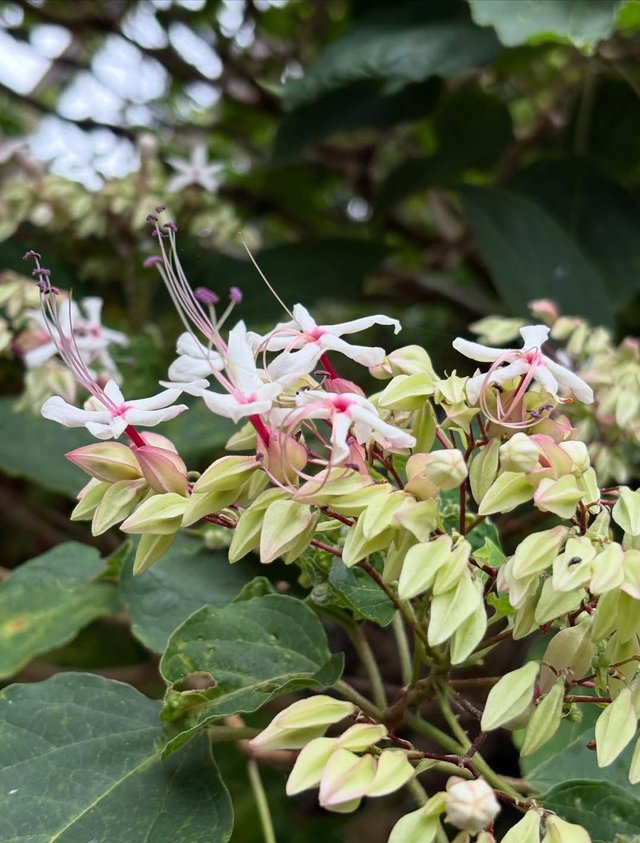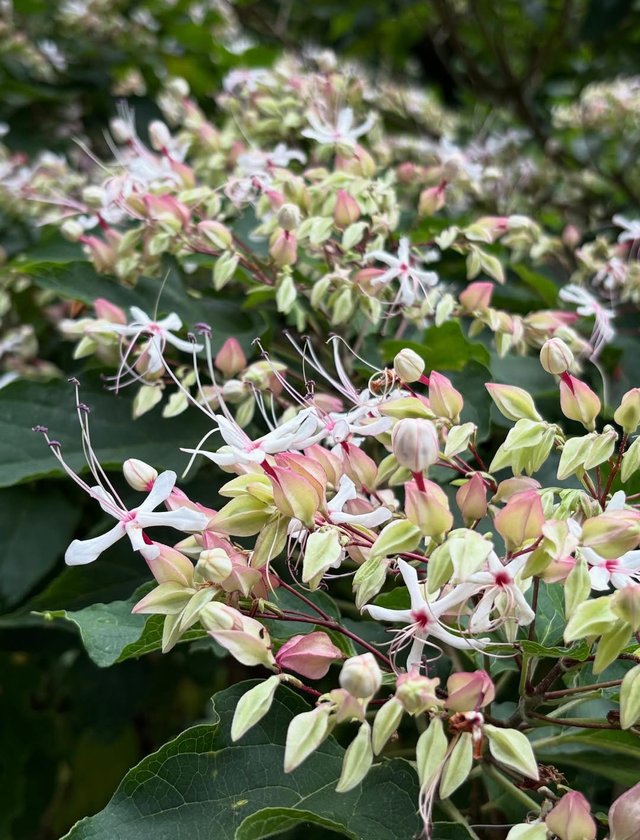Harlequin glorybower
Harlequin glorybower is a deciduous flowering shrub or small tree belonging to the family Lamiaceae, native to China, Korea, Japan, and India, valued for its ornamental beauty, fragrant flowers, and colorful fruits. It typically grows 3 to 6 meters tall with an open, spreading habit, and its large, heart-shaped, coarse-textured leaves release a distinctive peanut-like aroma when crushed. The plant is especially admired for its summer display of star-shaped, tubular white flowers surrounded by rosy to crimson calyces, which not only add color but also persist long after the petals drop, turning into vivid magenta or red structures that cradle metallic-blue drupes in late summer to autumn.
These striking fruits, often likened to gemstones, make the plant highly decorative well into fall. The flowers are rich in nectar and strongly scented, especially in the evening, attracting bees, butterflies, and moths, thus contributing to pollinator biodiversity. Harlequin glorybower prefers full sun to partial shade, thrives in fertile, well-drained soil, and can tolerate a range of conditions, though it benefits from shelter against harsh winds. It is hardy in USDA zones 7 to 10 and requires moderate watering, with some drought tolerance once established.
Propagation is usually done by semi-ripe cuttings in summer or by seed. In landscaping, it is used as a specimen shrub, in mixed borders, or near patios where its fragrance can be enjoyed. While generally low-maintenance, it may produce root suckers that require control to prevent unwanted spread. In traditional uses, some parts of the plant have been employed in folk medicine, though caution is advised as not all parts are edible and may have mild toxicity. Its unique combination of fragrant summer blooms, persistent colorful calyces, and jewel-like fruits makes Harlequin glorybower a distinctive choice for gardeners seeking multi-season ornamental interest.



